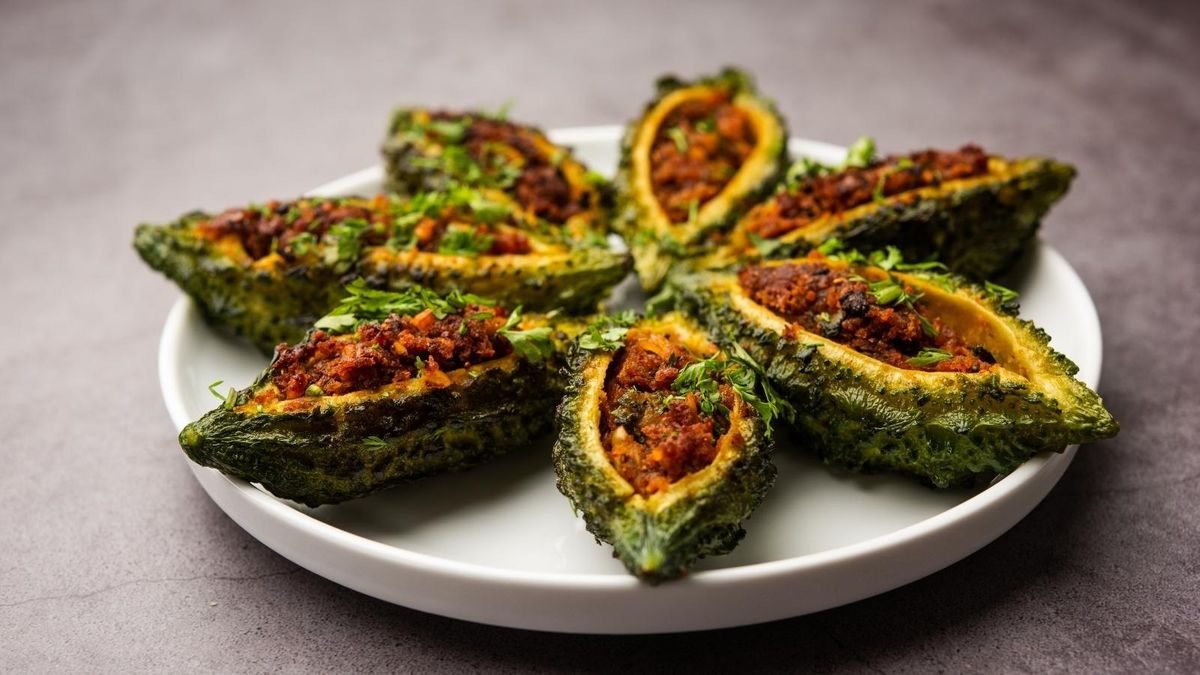Mention Punjabi food and the first thing that most would have you believe is the rich, creamy gravy overloaded with dollops of ghee and eager hospitality that may border on the excess. The latter holds true—the people of Punjab are typically great hosts and often express their hospitality through their love for food. Meanwhile, the exaggerated representation of Punjab’s food is a finely crafted illusion created by non-specific North-Indian restaurants.
In contrast, if you go to a Punjabi home, you’d mostly be treated to a hearty meal of seasonal and local vegetables, dals and an assortment of homemade bread. And no, Punjabi home kitchens aren’t churning out kulchas by the dozens. The following are five dishes that are quintessential to Punjab’s home kitchens but are not the ones spoken about the most.
1. Sookhi urad dal
A common preparation especially during winters this dry urad dal is known for its warming, heat retention properties. This is topped with chopped onions, tomatoes, green chillies, coriander and some lemon juice. Best enjoyed with hot namak-ajwain paratha, sookhi urad dal makes for an excellent, protein-rich breakfast or snack. While most homes use urad dal in the winters to make this, you can even replace the urad with a simpler moong dal, depending on where you are in India, or the season. This comes close in comparison to the Moradabadi dal, except for being dry and less rich.
2. Bharwa karela
The aroma of bharwa karele, best associated with opening a tiffin on a long train journey, can bring a smile to anyone’s face. Made especially during winters, the Punjabi stuffed bitter gourd dish is one the greatest ways to preserve vegetables and make them last longer in the harsh, cold winters of the northern plains. This dish is also an example of ‘root-to-tip eating’, where each part of the bitter gourd is used. The skin is peeled, salted and the water is drained out to remove bitterness. It is then mixed with a lot of chopped onions and pickle masala in mustard oil to make for the filling of the gourd, which is later stuffed and then fried till cooked.
3. Gajar-gobhi-shalgam achaar
Winters in North India are harsh with dense fog and sub-zero temperatures. One of the common practices during these months is to pickle and preserve the winter produce such as turnips, carrots and cauliflower, to enjoy through the year. The gajar-gobhi-shalgam achaar is a quintessential Punjabi pickle that is commonly made in three ways—a sweet pickle with jaggery, a spicy one with green chillies and ginger in mustard oil, and a ‘paaniwaala achaar’ where the vegetables ferment in their own juices. Best enjoyed with stuffed parathas, this is a favourite amongst the people of the community.
4. Mongre ki sabzi
Imagine trying to make a khaman, but the batter doesn’t rise. What would otherwise be considered a mistake, is something that the Punjabis aim for when making mongre ki sabzi, often confused with ‘moongre ki subzi’—made with radish pods. Punjabi mongre is akin to Gujarati gathia and is a Punjabi jugaad to make the best of leftovers. Many families often use leftover pakoras too to make this delight.
5. Roh di kheer
Punjabi home food is fundamentally uncomplicated, especially when it comes to desserts. They are fairly simple halwa and kheer, which do not use more than three to four ingredients but require immense patience while making it. For instance, there is the less-heard-of roh di kheer. Roh means sugarcane and this kheer is made with just sugarcane juice, broken basmati rice and a pinch of salt. Garnished with almonds before serving, this is a must for most families during the festival of Lohri and Baisakhi, which are two major harvest festivals of Punjab. Sugarcane grows in abundance in the state and this dish is a celebration of the produce.
The food of Punjab is as simple as its people. Being a primarily agrarian state, the homes celebrate the produce they grow in their farms and eat seasonal. One of the specialities of most Punjabi home dishes is their versatility, where one dish can be used in various forms. Try making these dishes in your kitchens and savour the real flavours of the land apart from the hyped butter chicken and naan.




